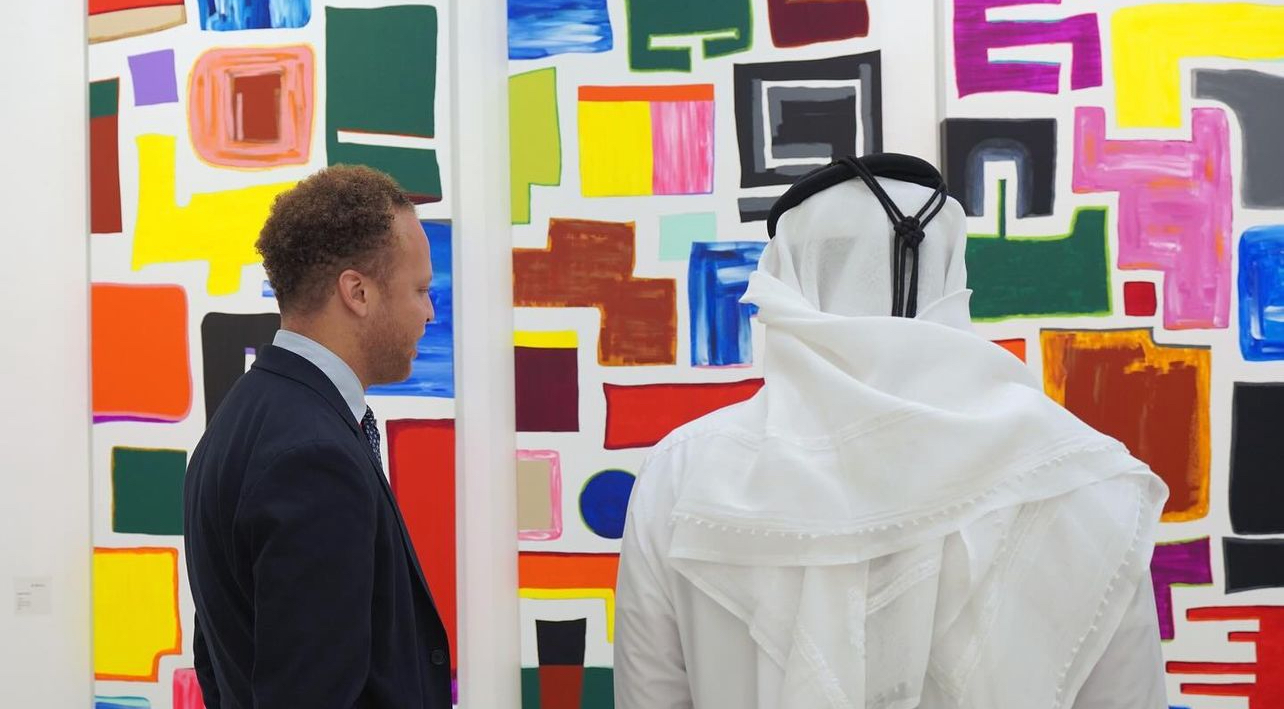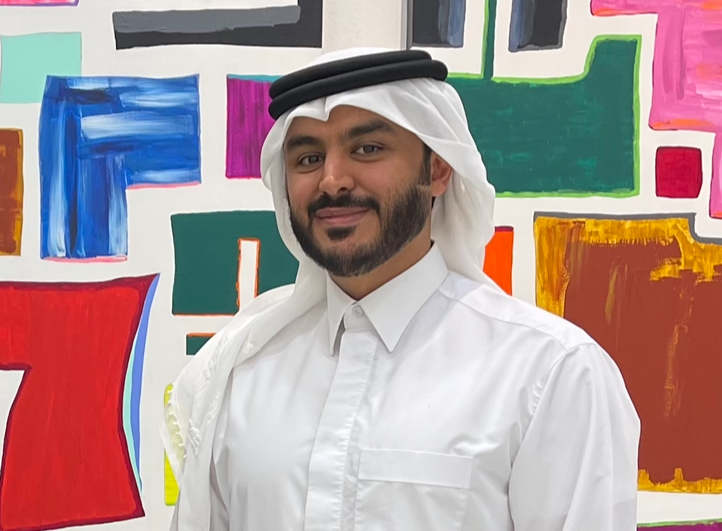Doha News caught up with the Qatari self-taught artist at the opening of Al Markhiya Gallery’s latest ’40 Minus’ series.
This week marked the grand opening of the 8th volume of Al Markhiya Gallery’s ’40 Minus’ exhibition series, drawing crowds to its doors.
The series is a platform for Arab artists under 40 to present their work professionally with guidance from a skilled art curator.
At the core of the series is the dynamic opportunity to engage with Doha’s vibrant creative community. As part of their exhibition, not only are the young artists presenting their work, but they are also engaging in the mutual exchange of ideas from fellow artists and receiving feedback from the city’s art community.
The latest edition of the series, titled ‘Urban Perspectives,’ will showcase the artistic endeavours of Sheikh Mubarak Al Thani and Rim Al Bahrani at the Katara Cultural Village branch of the gallery until June.
Known for his signature colourful hues and reimagining of iconic cityscapes, 12 of Sheikh Mubarak’s original pieces adorned Al Markhiya Gallery’s walls.
The Qatari self-taught creative aptly described ‘Urban Perspectives’ as an exploration of “the core essence of cities by transcending boundaries and looking at cities from above — a rather forgotten perspective.”

Rim Al Bahrani, on the other hand, constructed 19 bronze sculptures for the exhibition, each abstractly representing cities and homes and their evolving nature.
Through her artwork, she challenges the stereotype of identity as stagnant, while also exploring the juxtaposition between belonging and what she terms ‘un-belonging.’
She titled her bronze series ‘House to House.’ Over the years, Al Bahrani has called Yemen, Sweden, Qatar and the United Kingdom home at different stages of her life.
“From my travels across the world, I draw upon the personal memories of each household, weaving personal stories. This series reflects on the impermanence inherent in diasporic experiences, acknowledging nostalgic attachments in new, unfamiliar places,” the Swedish-Iraqi artist said.
As visitors enjoyed free-flowing chai and coffee at Al Markhiya, Doha News seized the opportunity to catch up with Sheikh Mubarak and hear about his approach to his latest exhibition.
A new perspective
Sheikh Mubarak’s canvases are coloured by his travels and experiences.
At Georgetown University – Qatar, he received his Bachelor’s in International Politics. He later travelled State-side for his Master’s degree in Urban Planning at New York University.
Through his work, he not only explores the energy of the world’s cityscapes, but also culture, politics and history.
His inquisitiveness about Indian and Iranian architecture led to a collaboration with the British luxury department store, Harrods.
Digging into Harrods’s archival material, he crafted a captivating Ramadan and Eid 2024 campaign, drawing inspiration from the store’s roots dating back to 1849.
His contemporary interpretation, which will be used for the store’s packaging and gift-wrapping offerings during the upcoming Eid, seamlessly incorporates patterns reminiscent of Indian Mughal motifs and the architectural splendour of 13th-century Kashan in Iran.
Sheikh Mubarak tells Doha News that he wanted to introduce a new perspective when it comes to how we see cityscapes.
“I’ve been looking at paintings of cities for a long time because I paint cities myself. And I realised that we’ve been limited to a certain perspective — which is direct, as in horizontal,” he said.
“I wanted to explore something more dynamic. So, in my work, I depict cities from above — from an aerial, or birdseye perspective. But I will also mix that with the horizontal perspective — this blurs the lines between the vertical and the horizontal,” he added.
This was exemplified with his ‘Summer’ and ‘Wishful Paris Spring’ paintings on display, which feature both 2D and 3D abstract elements.
His work also blurs the boundaries between indoor and outdoor spaces.
The ‘Wishful Paris Spring’ piece depicts the spout of a dallah, a traditional Arabic coffee pot, pouring coffee from the inside of a towering building into a miniature cup suspended on the exterior.
“In reality, when we see buildings, we get a glimpse of what’s inside and I wanted to bring this to the forefront.”
The Qatari artist also discussed his signature portrayal of abstract buildings.
“When you look at my work, when it comes to buildings, I sometimes won’t depict them in their actual form — instead, I depict them abstractly. For example, simple objects like salt and pepper shakers are transformed into buildings in my paintings.
“This provides space for new imaginations and an opportunity for a wide range of interpretations among the people. I like that freedom,” he concluded.







